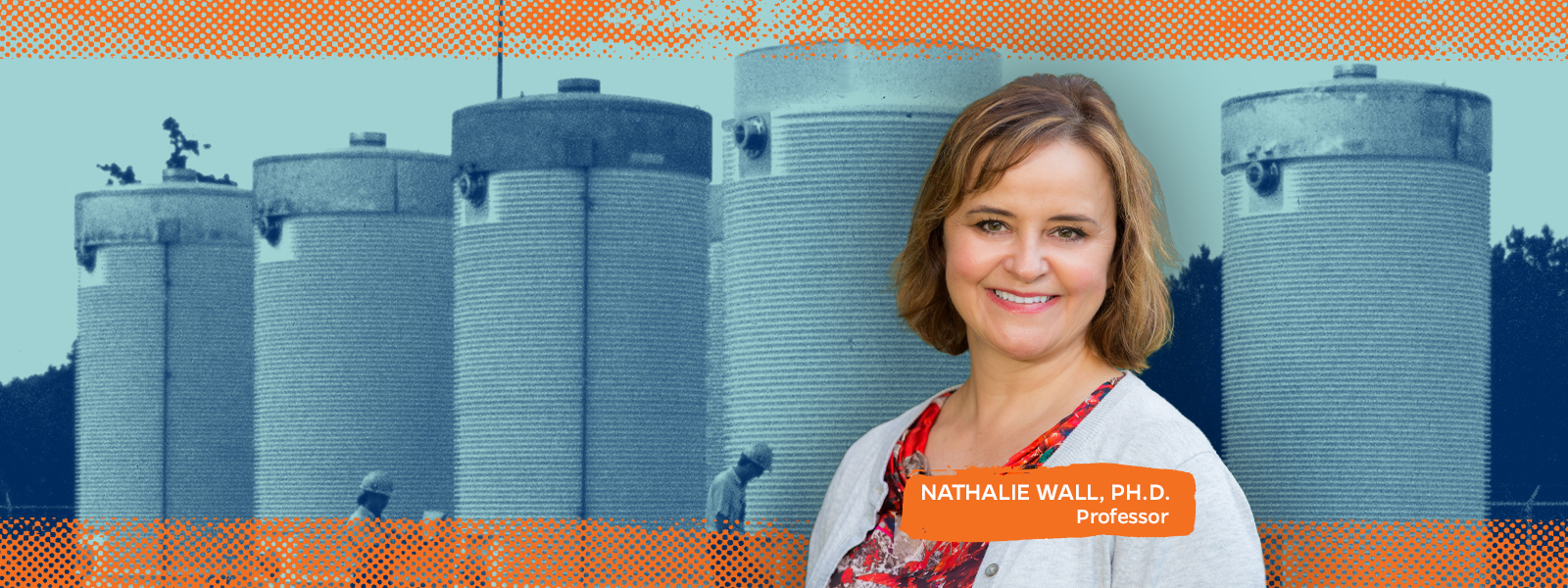The U.S. is the world’s largest nuclear power producer, with nearly 100 commercial power plants designed to run 24 hours a day, 7 days a week. Nuclear energy is also the most reliable source of clean energy in the country, according to the U.S. Department of Energy. But along with that clean, dependable power source comes the question of how best to handle the spent fuel after it’s been removed from the reactors.
Spent nuclear fuel and other nuclear waste is not currently recycled or reprocessed in the U.S., so it must be collected and stored until researchers devise a permanent disposal solution. Nathalie Wall, Ph.D., Professor in the Department of Materials Science & Engineering, has received an award from the U.S. Department of Energy to develop an innovative clay barrier to contain harmful radionuclides in stored radioactive waste. Dr. Wall is the principal investigator, leading a multidisciplinary team of experts from UF and Pacific Northwest National Laboratory.
Although the amount of nuclear fuel an individual would use in an entire lifetime would typically fit inside a soda can if the spent fuel was reprocessed, the U.S. still generates around 2,000 metric tons of used fuel each year. The primary method for dealing with spent fuel is called dry storage. The material is sealed into containers, called casks, made of concrete and steel and often stored on-site at the facility where it was produced. Radioactive wastes will then be disposed of in a repository, such as an underground salt deposit. Some radioactive waste generated in the past is transported to the Waste Isolation Pilot Plant (WIPP) storage facility in New Mexico, although the site does not accept wastes from nuclear power plants. The underground “warehouses” at WIPP carved out of salt deposits 2,000 feet underground are designed to slowly collapse over several years, literally encasing the casks as the earth fills in around them. Studies show that by using this method, the geological barrier created by the salt and ground is effective for impeding most, but not all the elements commonly found in nuclear waste.
“Technetium and iodine, two radionuclides that are particularly difficult to confine due to their complex chemistry and high mobility under oxidizing conditions, are also present in nuclear fuel,” said Dr. Wall. “Because of that, dry storage repositories such as WIPP require additional, man-made physical buffers, called engineered barriers, to help sequester these radioactive chemicals and further prevent their diffusion into the surrounding environment.”
Dr. Wall’s clay-based barrier would swell and fill gaps between the waste storage casks and the earth material surrounding them when implemented. The combination of the two barriers should restrict radionuclide leaking for several hundred years.
“In the distant future, groundwater may intrude into the repository, but the clay can be modified with the necessary chemical properties to limit radionuclide release,” added Dr. Wall. “Until a permanent disposal solution for nuclear waste is developed, the ultimate goal for us with this research is to make current storage methods as safe, stable and durable as possible.”
